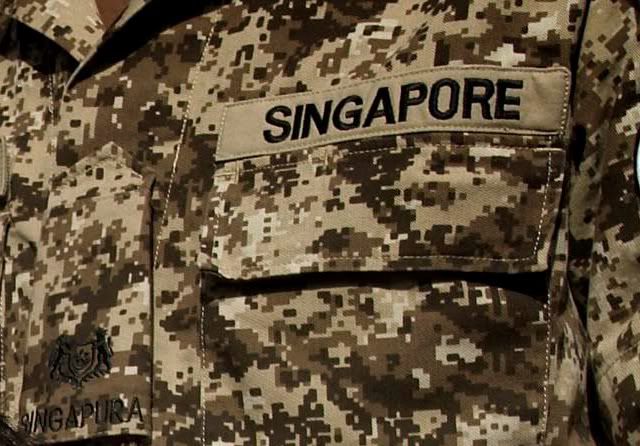The first step is always tinged with inertia...
Operation Blue Ridge - the SAF's contribution to the international effort in Afghanistan wound down not too long ago. Perhaps a short postmortem is in order. What, actually, did Singapore gain from this six-year commitment abroad?
1) Military expertise
A tightening of Standard Operating Procedures from the Afghan
experience will be greatly welcomed, and our troops who went over were undoubtedly debriefed. Your author spoke to a few soldiers who went over (at the exhibition at Toa Payoh HDB Hub), but unfortunately wasn't able to tease out any details on the debriefings.
ARTHUR firefinder radar mounted on Bandvagn 206 (BV206), displayed at Toa Payoh HDB Hub
Your author would venture that the amount of military expertise gained depends if forces stayed together as a unit. Simplistically, the ARTHUR artillery firefinder detachment, largely from the Artillery formation, might be able to absorb lessons learnt better than the reconstruction teams, who were drawn from the Engineers but also from other units, but this is ultimately down to the manner in which postmortems are conducted.
Since our
forces were not participating in active combat, it’s likely that most of what
was learned will be in force protection, living in harsh environments, and
logistics. The use of
MRAPs and improved OUVs signal a focus on force protection, and one wonders if
any lessons learned from the Afghanistan deployment will be used in improving
the Army’s logistic capacity.
Ford Everest "Operational Utility Vehicle" (OUV) as used in Afghanistan
MaxxPro MRAP as used in Afghanistan
The “last
mile” refers to the final leg of telecoms networks delivering services to the
consumer – you can lay all the expensive undersea cable and launch all the
satellites you want, but the last mile of cabling is just as important, and is
more often than not the “bottleneck” in services, as Wikipedia puts it. This applies to our logistics stores in Singapore in times of conflict too, although I am not a logistics professional. Perhaps
the Army will be looking into this.
There’ve
also been rumours that forces of the more direct action persuasion took part in
our Afghan activities, though this is highly doubtful and can't be cross-checked At the most, Commandos protecting force protection are believable enough. In any case, the same
criteria set out above still applies.
2) Improved relations with the US
It goes
without saying that as a coalition partner, this should help put us in the US’
good books. We’ve always tried to make ourselves useful to them in a
multiplicity of ways, and this is merely one of the latest ones.
Of course, whether this was worth the cost is up to the reader (and our leaders) to decide.
3) Increased danger of terror attack
Our
contribution to Afghanistan would seem to increase our profile in the eyes of
terrorists. That said – we’ve always been a target. As unfortunate as it is to say this, our participation could perhaps at best be marginal in keeping our identity as a "target".
4) Global mindshare
It’s
possible that we got some international news coverage - perhaps similar to what limited coverage we got thanks to helping out in Hurricane Katrina with our Peace Prarie detachment of Chinook helicopters.
However,
there were 60 other countries involved in this whole shebang.
China,
Czech Republic, and Turkey participated in a humanitarian capacity as well.
Even some such as Azerbajan and Armenia – and I honestly doubt they made many
international headlines.
5) Local pride in SAF capability
The
Ministry has been paying attention to the public image of the SAF, as can be
seen from the push in Commitment to Defence, C2D. The SAF’s facebook pages,
participation in filming of homegrown movies and drama series, and Cyberpioneer’s
youtube account are all examples of this.
Operation
Blue Ridge is no exception, of course, with roadshows going on throughout the
month at various areas throughout Singapore before making its way to the Army
Museum.
It’s
definitely gonna impress. Still – as a regular operational thing, it is much removed from what the majority of NSFs will go through, so its impact is hard to gauge barring actual fieldwork. Nonetheless, that may be just what we need.
Now it would be interesting if we could get the numbers on how much money OBR cost, as well. Not that your author advocates pure economic efficiency, but it would definitely put things in perspective.






No comments:
Post a Comment